Understanding Risk Ownership in Modern Enterprises
October 17, 2025

In the rapidly changing and dynamic business landscape of today, businesses are exposed to a number of risks—ranging from operational and financial risks to regulatory and reputational ones. How to manage these risks is essential to ensuring business continuity, stakeholder trust, and strategic success. The task of risk identification, though, is just the beginning; the challenge is actually in delegating specific accountability so that every risk is actively managed.
This blog delves into the idea of risk ownership in businesses. It discusses who is supposed to own risk, why risk ownership is essential, what the risk owners are supposed to do, how risk ownership can be embedded into an organization's culture, and common difficulties organizations encounter while making risk ownership work and tips on how to overcome them.
What is Risk Ownership?
A risk owner is the person or group of people within an organization with overall responsibility for addressing a particular risk from identification to resolution. This encompasses identifying the risk, evaluating its possible effect, creating and enforcing mitigation measures, as well as ongoing monitoring of its status. The goal is to have the risk under the organization's established risk appetite and aligned with its general strategic and operational objectives.
In contrast to a passive onlooker, a risk owner is an active player in the risk management process of the organization. They are tasked with coordinating with the concerned stakeholders, being transparent while reporting, and taking adequate actions to contain and control the risk in an effective manner. This involves making wise decisions regarding the responses to risks—avoidance, mitigation, transfer, or acceptance—and assessing if these countermeasures continue to be effective in the long run.
Finally, good risk ownership implies clear accountability and governance in the risk management process. It ensures that every risk is assigned a party to be responsible for it, thus minimizing confusion and creating a culture of active risk management. This clarity of ownership enables organizations to align responses to risks more with business objectives, improve decision-making, and build stronger resilience to disruptions.
The Importance of Clear Risk Ownership
Clear risk ownership is fundamental to effective risk management because it turns abstract threats into actionable responsibilities. When every identified risk has a named owner, accountability is no longer diffused — someone is explicitly responsible for tracking the risk, executing mitigation actions, and reporting progress. Without that clarity, risks frequently fall through gaps between teams, controls are duplicated or neglected, and the organization is slower to detect and respond to emerging issues. In short, ambiguous ownership increases the chance of costly surprises and reduces overall organizational resilience.
- Assigned owners enable systematic prioritization. A risk owner assesses both the likelihood and the potential impact of a risk in the context of business objectives, which lets leaders compare risks using consistent criteria and focus effort where it matters most. This prevents firefighting low-value issues while high-impact risks remain unattended, and supports portfolio-level trade-offs (for example, accepting a low-cost, low-impact risk to free resources for a critical mitigation).
- Clear ownership improves resource allocation by giving one person the authority and obligation to secure what’s needed — budget, people, tools, or external expertise — to manage the risk. When the owner can justify resource requests with a clear risk assessment and a defined mitigation plan, funding and staffing decisions become evidence-based and faster. This avoids ad hoc measures and ensures that controls are implemented and maintained, rather than being one-off or abandoned.
- Finally, ownership strengthens decision making. Risk owners act as the single point of contact for a risk, consolidating relevant information, proposing response options (avoid, mitigate, transfer, accept), and explaining trade-offs to leadership. That concise counsel enables timely, well-informed decisions that align with strategic priorities. Owners also provide the data for meaningful KPIs and reporting — for example, residual risk levels, control effectiveness, and action completion rates — which leadership needs to steer the organization confidently.
- To realize these benefits, organizations should codify ownership: name owners in risk registers, define their authority and expected activities, link ownership to performance metrics, and review assignments periodically. Tools like RACI charts, risk appetite statements, and regular risk-review forums help maintain clarity. When ownership is explicit and supported, risk management shifts from a box-ticking exercise to a proactive capability that protects value and enables better strategic choices.
Roles and Responsibilities of a Risk Owner
- Risk Identification:
The risk owner is responsible for actively identifying potential threats or opportunities that could affect the organization’s objectives. This involves staying informed about internal and external developments—such as operational changes, regulatory shifts, or market dynamics—and recognizing early warning signs before they escalate into major issues. - Risk Assessment:
Once a risk is identified, the owner evaluates its potential likelihood and impact on the organization. This includes analyzing contributing factors, dependencies, and potential consequences. The assessment helps determine the risk’s priority level and informs decisions on where to focus mitigation efforts. - Risk Mitigation:
The risk owner develops and implements appropriate strategies to reduce, transfer, or eliminate the risk. This may involve strengthening controls, updating processes, conducting training, or adopting technology solutions. The owner also ensures that mitigation actions are realistic, cost-effective, and aligned with the organization’s risk appetite. - Monitoring:
Continuous monitoring is essential to track changes in the risk’s status or environment. The risk owner regularly reviews control effectiveness, monitors key indicators, and identifies any new or emerging threats. This proactive approach ensures timely adjustments to mitigation strategies and prevents risks from re-emerging unnoticed. - Reporting:
The risk owner communicates risk status, mitigation progress, and residual exposure to relevant stakeholders, including management and governance committees. Clear and timely reporting promotes transparency, supports informed decision-making, and ensures accountability for risk management actions. - Collaboration:
Effective risk management often spans multiple functions. The risk owner works closely with other departments, process owners, and subject matter experts to address cross-functional risks. Collaboration ensures that responses are coordinated, resources are used efficiently, and organizational objectives remain protected across all areas.
Integrating Risk Ownership into Organizational Culture
Embedding risk ownership in an organization's culture is about creating risk management as a routine, day-to-day way people think and behave — not as every-now-and-then compliance exercise. It begins with commitment from leaders: when executives demonstrate active risk behaviors and recognize good risk choices, it sends the message that ownership is important. Baking risk into performance assessments, strategic planning, and project launches ensures that it's front-of-mind at each decision point and not grafted on later.
- Training: Develop a customized learning program to educate employees on what risk ownership in action — how to identify risks, measure impact, and escalate accordingly — actually looks like. Training must be role-tailored (e.g., frontline workers versus managers) and be supplemented by practical exercises, case studies, and reminders. The aim is to get individuals from conceptual awareness to secure, repeat behaviors so that responsibility is not just understood but consistently acted upon.
- Communication: Establish transparent, open avenues for raising and discussing risks without fear of retribution. Frequent risk huddles, brief dashboards, and simple reporting pathways (with anonymous channels where needed) keep items top-of-mind. Use common, unchanging language when discussing risk so that everyone across functions has the same mental model and can work together more harmoniously.
- Enablement: Provide the risk owners with the tools, time, and powers they require — decision powers, mitigation budgets, access to specialist expertise, and computer systems to monitor controls and indicators. Enabling support also includes templates, playbooks, and escalation matrices that minimize uncertainty and expedite response. When empowered instead of constrained, the owners can respond decisively and sustainably.
- Accountability: Reinforce ownership by linking duties to quantifiable goals and governance reviews. List owners in the risk register, necessitate regular progress reports, and make performance discussions include risk-oriented goals. Accountability must be in ratio — accompanied by recognition for responsible stewardship and beneficial follow-up when actions fall behind.
Finally, reinforce the cultural shift with routines and rituals that keep risk top-of-mind: quarterly risk reviews, post-incident learning sessions, and leadership spotlights on successful mitigations. Over time, these practices turn risk ownership from a policy into a habit — improving resilience, speeding decision-making, and aligning everyday actions with strategic objectives.
Challenges in Risk Ownership
Though ownership of risk assignment is an essential art of effective risk management, it is not without pitfalls. Knowledge of these pitfalls assists organizations in foreseeing vulnerabilities and creating strategies to bypass them.
Overlapping Responsibilities:
In big or complicated businesses, risks tend to cut across departments, functions, or processes. This can result in instances where different people feel that they are accountable for the same risk, or even where everyone assumes the other is taking care of it. Such uncertainty can create risk mitigation gaps, response delays, and inconsistent reporting. Roles, responsibilities, and escalation procedures must be clearly laid out so that confusion does not arise and accountability is maintained.
Resource Constraints:
Even when it's clearly allocated, risk owners will be hampered by limited resources, authority, or knowledge to act on the risk. Budget constraints, other priorities, or inability to access critical tools can preclude timely mitigation. Lacking proper support, risk owners won't be able to enforce controls or react to emerging dangers, leaving the organization vulnerable. Organizations need to make sure risk owners are equipped with required resources, authority, and access to expert advice.
Changing Risk Landscape:
The dynamic nature of risk is driven by market fluctuations, regulatory updates, technological breakthroughs, and operational disruptions. Yesterday's low-risk event might be crucial today. It necessitates ongoing reevaluation of risk ownership and mitigation processes. Risk owners need to remain alert, keep checking the risk registers on a regular basis, and stay updated in line with new events. Lack of this can make previously good controls less effective, and the resulting risks become more probable.
Successful management of these challenges demands defined roles, proper empowerment, and active adaptive response. Organizations that are able to identify and manage these obstacles reinforce their risk management system, so that risks are actively tracked, managed, and aligned to strategic goals.
Conclusion
Effective risk management hinges on clear and accountable risk ownership. By assigning specific individuals or entities to manage identified risks, organizations can ensure that risks are addressed proactively and in alignment with their strategic objectives. However, for risk ownership to be successful, it must be supported by a culture that values risk management, provides necessary resources, and holds individuals accountable for their roles.
SHARE THIS
Discover More Articles
Explore a curated collection of in-depth articles covering the latest advancements, insights, and trends in AI, MLOps, governance, and more. Stay informed with expert analyses, thought leadership, and actionable knowledge to drive innovation in your field.

Is Explainability critical for your AI solutions?
Schedule a demo with our team to understand how AryaXAI can make your mission-critical 'AI' acceptable and aligned with all your stakeholders.



.png)




















